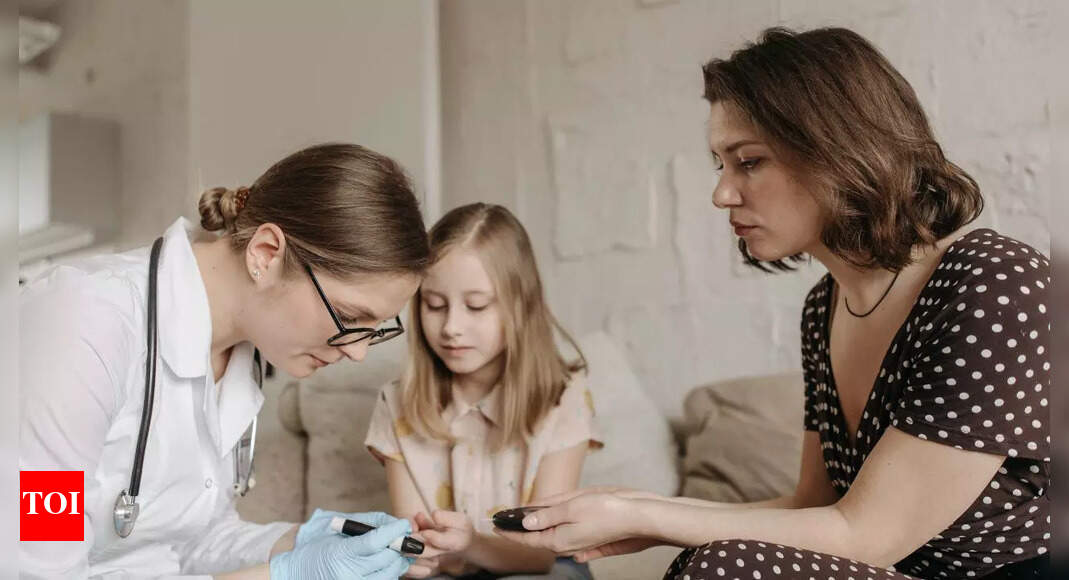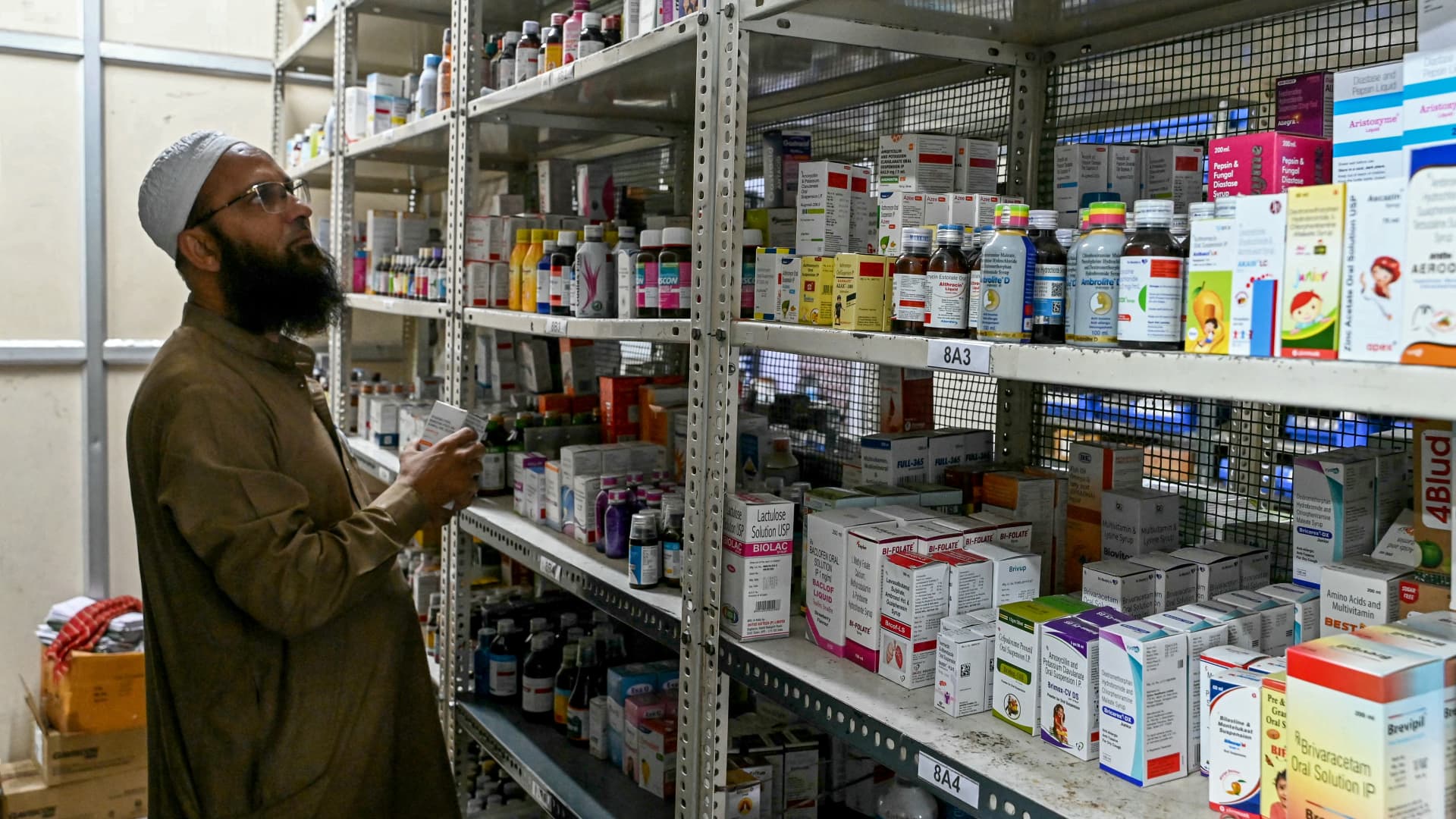Type 1 vs type 2 diabetes in children: How symptoms differ and what to watch for | – Times of India

Diabetes is increasingly affecting children, making early recognition crucial for proper treatment and lifelong health. While both type 1 and type 2 diabetes involve issues with blood sugar regulation, they differ significantly in cause, onset, symptoms, and treatment. Type 1 is an autoimmune condition that usually appears suddenly, while Type 2, once rare in kids, is now rising due to obesity and inactivity. Recognising the early warning signs of each type can lead to timely diagnosis, better management, and fewer complications. This guide explores the key differences to help parents understand what to watch for in their child.
What is type 1 diabetes in children?
Type 1 diabetes is an autoimmune condition in which the immune system attacks and destroys the insulin-producing beta cells in the pancreas. As a result, the body can no longer make insulin, a hormone essential for helping glucose enter cells to produce energy. Without insulin, sugar builds up in the bloodstream, leading to high blood sugar (hyperglycaemia).
This condition often appears suddenly in childhood or adolescence. Risk factors include a family history of type 1 diabetes, being white, and geographic origin from places like Finland or Sardinia. Certain age groups, particularly 4–6 years and 10–14 years, are more likely to be diagnosed.
Symptoms of type 1 diabetes in children
Type 1 symptoms usually appear abruptly. Common signs include:
- Excessive thirst and frequent urination
- Sudden, unexplained weight loss despite increased hunger
- Fatigue, irritability, and mood swings
- Stomach pain, nausea, or vomiting
- Fruity-smelling breath and rapid breathing (signs of diabetic ketoacidosis)
- Blurred vision and yeast infections in girls
These symptoms can sometimes mimic the flu or other illnesses, so timely testing is crucial.
What is type 2 diabetes in children?
Type 2 diabetes is a metabolic disorder where the body either doesn’t make enough insulin or can’t use it effectively (insulin resistance). Once seen mostly in adults, Type 2 is now appearing in children, especially those who are overweight, inactive, or have a family history of diabetes.Risk factors also include being of African American, Hispanic, Asian, or Native American heritage; having low HDL (good) cholesterol, high triglyceride levels; or having a mother with gestational diabetes. Girls are slightly more likely to develop it, as are children with low birth weight or prediabetes.
Symptoms of type 2 diabetes in children
Unlike type 1, symptoms of type 2 develop more slowly and can go unnoticed. Signs may include:
- Frequent urination and increased thirst
- Fatigue and irritability
- Blurred vision
- Tingling or numbness in hands or feet
- Dark patches of skin around the neck or armpits (acanthosis nigricans)
- Recurrent infections or slow-healing wounds
Diagnosis is confirmed through tests like A1C, fasting glucose, or oral glucose tolerance.
How are type 1 and type 2 diabetes treated in children?
For type 1 diabetes, treatment always includes daily insulin therapy, delivered via injections or an insulin pump. Children also need to monitor their blood glucose regularly, follow a structured meal plan, count carbohydrates, and stay physically active. Urine testing for ketones is also important.For type 2 diabetes, the focus is on lifestyle changes: a healthy diet, regular exercise, and weight loss if needed. In some cases, oral medications or insulin therapy may be required. Like type 1, regular blood glucose monitoring is essential.
Spotting the difference: Type 1 vs Type 2 diabetes in children
Here’s a quick comparison to understand how the two types differ:
Long-term complications and how to support your child
Poorly managed diabetes can lead to kidney, nerve, and eye damage, heart issues, and gum or foot problems. Type 1 may cause dangerous low blood sugar or diabetic ketoacidosis. Type 2 also raises the risk of high blood pressure, cholesterol, fatty liver, and mental health issues. Support your child with healthy habits, emotional care, and a daily routine. Coordinate with schools, consider a medical ID bracelet, and ask your provider about screening or treatments that may delay Type 1 onset.Contact your child’s doctor if you notice any symptoms of diabetes, if blood glucose levels remain abnormal, or if your child becomes ill. Children with diabetes often need additional support during sickness, as blood sugar can become harder to manage. Ongoing monitoring and regular check-ups are essential. Type 1 and type 2 diabetes are different in origin and treatment, but both require long-term commitment to care. With early detection, the right interventions, and strong family and community support, children with diabetes can lead healthy, active lives.Also Read: Taking magnesium daily may cut your colon cancer risk, according to research: How to improve your intake naturally
var _mfq = window._mfq || [];
_mfq.push([“setVariable”, “toi_titan”, window.location.href]);
!(function(f, b, e, v, n, t, s) {
function loadFBEvents(isFBCampaignActive) {
if (!isFBCampaignActive) {
return;
}
(function(f, b, e, v, n, t, s) {
if (f.fbq) return;
n = f.fbq = function() {
n.callMethod ? n.callMethod(…arguments) : n.queue.push(arguments);
};
if (!f._fbq) f._fbq = n;
n.push = n;
n.loaded = !0;
n.version = ‘2.0’;
n.queue = [];
t = b.createElement(e);
t.async = !0;
t.defer = !0;
t.src = v;
s = b.getElementsByTagName(e)[0];
s.parentNode.insertBefore(t, s);
})(f, b, e, ‘https://connect.facebook.net/en_US/fbevents.js’, n, t, s);
fbq(‘init’, ‘593671331875494’);
fbq(‘track’, ‘PageView’);
};
function loadGtagEvents(isGoogleCampaignActive) {
if (!isGoogleCampaignActive) {
return;
}
var id = document.getElementById(‘toi-plus-google-campaign’);
if (id) {
return;
}
(function(f, b, e, v, n, t, s) {
t = b.createElement(e);
t.async = !0;
t.defer = !0;
t.src = v;
t.id = ‘toi-plus-google-campaign’;
s = b.getElementsByTagName(e)[0];
s.parentNode.insertBefore(t, s);
})(f, b, e, ‘https://www.googletagmanager.com/gtag/js?id=AW-877820074’, n, t, s);
};
function loadSurvicateJs(allowedSurvicateSections = []){
const section = window.location.pathname.split(‘/’)[1]
const isHomePageAllowed = window.location.pathname === ‘/’ && allowedSurvicateSections.includes(‘homepage’)
const ifAllowedOnAllPages = allowedSurvicateSections && allowedSurvicateSections.includes(‘all’);
if(allowedSurvicateSections.includes(section) || isHomePageAllowed || ifAllowedOnAllPages){
(function(w) {
function setAttributes() {
var prime_user_status = window.isPrime ? ‘paid’ : ‘free’ ;
var geoLocation = window?.geoinfo?.CountryCode ? window?.geoinfo?.CountryCode : ‘IN’ ;
w._sva.setVisitorTraits({
toi_user_subscription_status : prime_user_status,
toi_user_geolocation : geoLocation
});
}
if (w._sva && w._sva.setVisitorTraits) {
setAttributes();
} else {
w.addEventListener(“SurvicateReady”, setAttributes);
}
var s = document.createElement(‘script’);
s.src=”https://survey.survicate.com/workspaces/0be6ae9845d14a7c8ff08a7a00bd9b21/web_surveys.js”;
s.async = true;
var e = document.getElementsByTagName(‘script’)[0];
e.parentNode.insertBefore(s, e);
})(window);
}
}
window.TimesApps = window.TimesApps || {};
var TimesApps = window.TimesApps;
TimesApps.toiPlusEvents = function(config) {
var isConfigAvailable = “toiplus_site_settings” in f && “isFBCampaignActive” in f.toiplus_site_settings && “isGoogleCampaignActive” in f.toiplus_site_settings;
var isPrimeUser = window.isPrime;
var isPrimeUserLayout = window.isPrimeUserLayout;
if (isConfigAvailable && !isPrimeUser) {
loadGtagEvents(f.toiplus_site_settings.isGoogleCampaignActive);
loadFBEvents(f.toiplus_site_settings.isFBCampaignActive);
loadSurvicateJs(f.toiplus_site_settings.allowedSurvicateSections);
} else {
var JarvisUrl=”https://jarvis.indiatimes.com/v1/feeds/toi_plus/site_settings/643526e21443833f0c454615?db_env=published”;
window.getFromClient(JarvisUrl, function(config){
if (config) {
const allowedSectionSuricate = (isPrimeUserLayout) ? config?.allowedSurvicatePrimeSections : config?.allowedSurvicateSections
loadGtagEvents(config?.isGoogleCampaignActive);
loadFBEvents(config?.isFBCampaignActive);
loadSurvicateJs(allowedSectionSuricate);
}
})
}
};
})(
window,
document,
‘script’,
);
[title_words_as_hashtags



